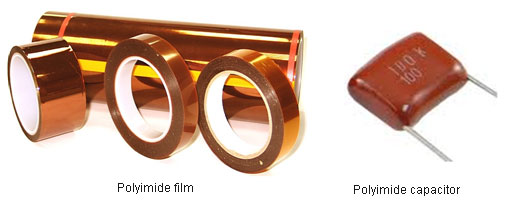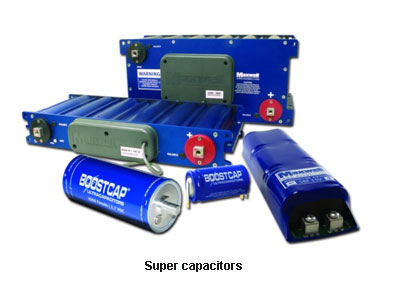What is a Capacitor?
A capacitor is a passive two terminal component which stores electric charge. This component consists of two conductors which are separated by a dielectric medium. The potential difference when applied across the conductors polarizes the dipole ions to store the charge in the dielectric medium. The circuit symbol of a capacitor is shown below:

Fig. 1: Symbol of a capacitor
As you turn on the power supply, the current begins to flow through the capacitor inducing the positive and negative potentials across its plates. The capacitor continues to charge until the capacitor voltage equalizes up to the supply voltage which is called as the charging phase of the capacitor. Once the capacitor is fully charged at the end of this phase, it gets open circuited for DC. It begins to discharge when the power of the capacitor is switched off. The charging and discharging of the capacitor is given by a time constant.
/* Style Definitions */
table.MsoNormalTable
{mso-style-name:”Table Normal”;
mso-tstyle-rowband-size:0;
mso-tstyle-colband-size:0;
mso-style-noshow:yes;
mso-style-priority:99;
mso-style-qformat:yes;
mso-style-parent:””;
mso-padding-alt:0in 5.4pt 0in 5.4pt;
mso-para-margin-top:0in;
mso-para-margin-right:0in;
mso-para-margin-bottom:10.0pt;
mso-para-margin-left:0in;
line-height:115%;
mso-pagination:widow-orphan;
font-size:11.0pt;
font-family:”Calibri”,”sans-serif”;
mso-ascii-font-family:Calibri;
mso-ascii-theme-font:minor-latin;
mso-hansi-font-family:Calibri;
mso-hansi-theme-font:minor-latin;}
/* Style Definitions */
table.MsoNormalTable
{mso-style-name:”Table Normal”;
mso-tstyle-rowband-size:0;
mso-tstyle-colband-size:0;
mso-style-noshow:yes;
mso-style-priority:99;
mso-style-qformat:yes;
mso-style-parent:””;
mso-padding-alt:0in 5.4pt 0in 5.4pt;
mso-para-margin-top:0in;
mso-para-margin-right:0in;
mso-para-margin-bottom:10.0pt;
mso-para-margin-left:0in;
line-height:115%;
mso-pagination:widow-orphan;
font-size:11.0pt;
font-family:”Calibri”,”sans-serif”;
mso-ascii-font-family:Calibri;
mso-ascii-theme-font:minor-latin;
mso-hansi-font-family:Calibri;
mso-hansi-theme-font:minor-latin;}
 The voltage across the capacitor is given by
The voltage across the capacitor is given by 

Fig. 2: Image showing types of capacitors
Construction and Types
For example – 4n7 means 4.7nF.

Fig. 3: Image of various types of capacitors
2. Variable capacitors
Fixed Capacitors

Fig. 4: Image of Paper Capacitors

Fig. 5: Image showing construction of Paper Capacitors
Fixed Capacitors – 2

Fig. 6: Image of Metalized Paper Capacitors
d. Mica capacitor:

Fig. 7: Image showing construction of Mica Capacitor

Fig. 8: Image of Mica Capacitors
Fixed Capacitors – 3

Fig. 9: Image of Silver Mica Capacitor
f. Glass capacitor:

Fixed Capacitors – 4
Class 1 capacitors offer the best performance with respect to dissipation factor. A typical figure may be 0.15%. It is also possible to obtain very high accuracy (~1%) class 1 capacitors rather than the more usual 5% or 10% tolerance versions. The highest accuracy class 1 capacitors are designated C0G or NP0.



Fig. 13: Table listing Class 2 Codes for Ceramic Capacitors

Fig. 14: Image of Class 2 Ceramic Capacitors
c. Class 3 – Class 3 ceramic capacitors are small in size with less accuracy, stability and low dissipation factor. This type of capacitors cannot withstand high voltages.

Fixed Capacitors – 5

Fig. 16: Image of Plastic Capacitors

Fig. 17: Image of Polystyrene Capacitors

Fig. 18: Image of Kapton Polyimide Capacitor



Fig. 21: Image of TEFLON or PTFE Fluorocarbon Capacitor

Fig. 22: Image of Metalized Plastic Capacitor
Fixed Capacitors – 6


Fig. 24: Image of Aluminum Electrolyte Capacitors

Fig. 25: Image showing construction of Tantalum Electrolyte Capacitor


Fig. 27: Image of Super Capacitors
Variable Capacitors



Fig. 30: Image of Variable Capacitors
Capacitor Color Code

Fig. 31: Image showing color coding for Capacitors
You may also like:
Filed Under: Tutorials







Questions related to this article?
👉Ask and discuss on Electro-Tech-Online.com and EDAboard.com forums.
Tell Us What You Think!!
You must be logged in to post a comment.